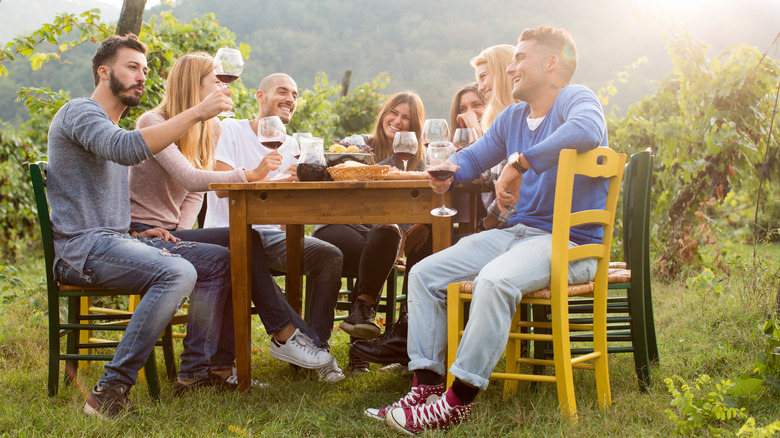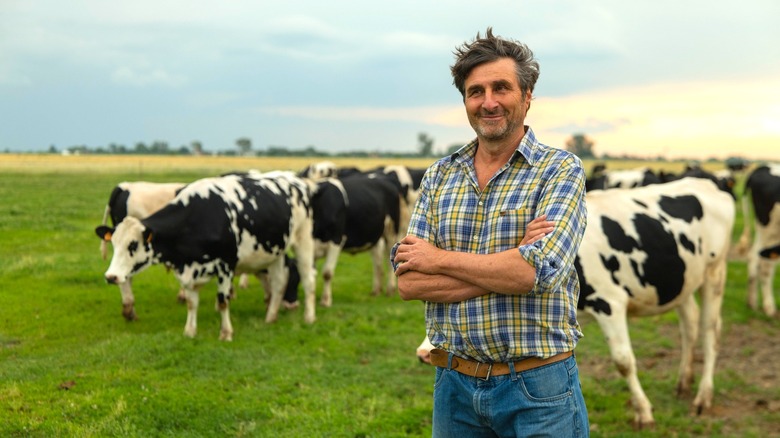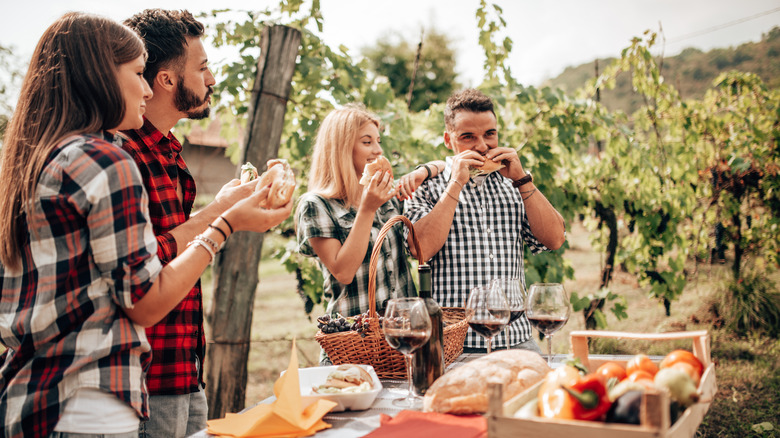The Amazingly Fresh Type Of Meal To Eat While In Italy, Per Rick Steves' Tour Guide
You may have heard of the farm-to-table movement in which restaurants source their ingredients fresh, seasonal, and direct from local farms — it's good for the environment, economy, and the diners who benefit from organic, quality meals. But what if the distance between farm and table was bridged even closer? That's where the zero-kilometer meal comes in. Rick Steves' tour guide, Cameron Hewitt, recommends it as one of the top 10 food experiences you must have while traveling through Italy.
The roughly 20-year-old zero-kilometer food movement, also known as km0, focuses on consuming food made from produce grown, harvested, and processed within "zero kilometers" from where it's being eaten — literally. The extremely local approach of km0 takes farm-to-table to "shorter" lengths. However, Hewitt explains that Italians have been doing farm-to-table since long before it became the international culinary trend it is today. In Italy, "campanilismo," a loyalty to community and regional specialties, fuses with "cucina povera," a kitchen philosophy focused on seasonality and simplicity. These approaches have defined Italian cookery for millennia and are still carried on through km0.
Some hallmarks of the zero-kilometer meal? Handpicked organic fruits and vegetables grown without pesticides. Animals that are allowed to roam freely, raised without hormones or chemicals, and are well taken care of. Meticulous aging of cheeses and other fermented products, like wine, according to ancient, traditional methods. But most of all, transparency of production: Farmers have a precise, hands-on understanding of how everything is made and are proud to share it with you.
Benefits of zero-kilometer meals
Cameron Hewitt explains that the km0 approach starkly contrasts the predictability and consistency of the produce in an American supermarket. No two zero-kilometer meals will taste the same due to the effects of feed (for livestock and plants), seasonality, and other element-related factors. This unpredictable local influence is the hallmark of km0. When you go into a U.S. supermarket, it may be surprising just how much of the produce is imported. According to the FDA, 32% of vegetables, 55% of fruit, and 94% of seafood are imported from over 200 countries for American consumption — a lot further than zero kilometers away. With bananas from Guatemala, potatoes from Canada, shrimp from India, lamb from Australia, and rice from Thailand, the U.S. meal is equivalent to having the whole world on your plate.
In contrast, zero-kilometer foods are harvested at their peak and brought directly to the table from the farm, often within hours — thereby retaining the true flavors, textures, and freshness of the produce. By eliminating long-distance food transportation, zero-kilometer eating significantly cuts down carbon emissions and packaging waste. Km0 also fosters a closer connection between producers and consumers, retaining more of the economic benefits within local communities. This helps maintain traditional farming techniques and encourages artisanal production methods. Finally, because each region in Italy has its specialties based on the terrain and climate, zero-kilometer eating allows travelers to taste unique dishes that truly represent the area — from the truffles of Piedmont to the olives of Puglia.
Where to have a km0 dining experience
So, where does one go about having such a natural, unique, and intimate dining experience? Km0 meals are most commonly and authentically found on local farms. Cameron Hewitt recommends Santa Giula in Tuscany, an 18-hectare farm run by the Terzuoli family since 1950, specializing in everything from wine and grappa to homemade cured meats and cheeses. They offer a zero-kilometer lunch experience that includes a property tour, wine tasting, and a km0 lunch. Agriturismo, or Italian farm stays, is another excellent avenue. These working farms often serve overnight guests meals made from their own crops and livestock — a proper zero-kilometer meal.
For a more self-catering traveler, visiting a market can be another way to engage with km0, as vendors often sell products from surrounding areas. It's a good opportunity to chat with growers, learn about their practices, and pick up the freshest ingredients for a self-prepared meal. Italy's food festivals, which celebrate local cuisine and ingredients with serious passion, have km0 in their very philosophy. In February, go to Norcia for the Black Truffle Fair, and in April, to Ladispoli for the Artichoke Festival. July ripens Massese lemons, celebrated at the Sagra del Limone festival in Massa Lubrense. October brings the castagne to the Chestnut Festival in the towns of Scala, Marradi, and Fenis. In Italy, the zero-kilometer meal is not an elite or exclusive experience — it's just the fresh, local, authentic, and delicious way things are done — and you must try it.


